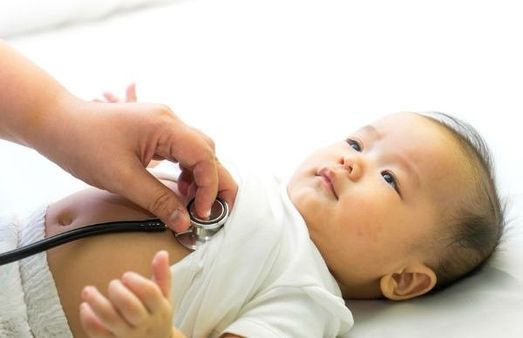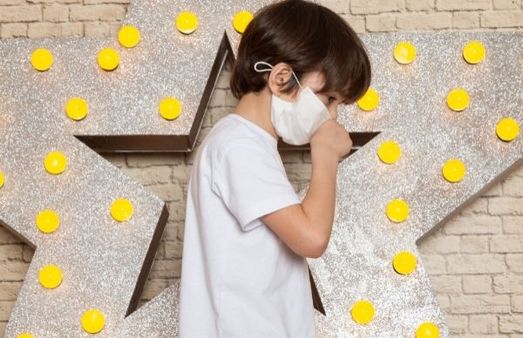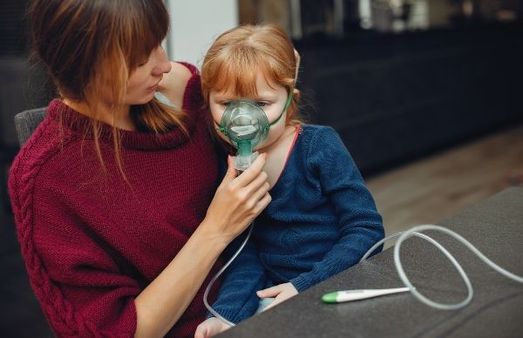Just In
- 6 hrs ago

- 15 hrs ago

- 17 hrs ago

- 17 hrs ago

Don't Miss
- Education
 JEE Main Result 2024 Out, Telangana's 15 Toppers Shine, Check Statewise List of 56 Candidates with Perfect 100
JEE Main Result 2024 Out, Telangana's 15 Toppers Shine, Check Statewise List of 56 Candidates with Perfect 100 - Sports
 Who Won Yesterday's IPL Match 40? DC vs GT, IPL 2024 on April 24: Delhi Capitals Clinch High-Scoring Thriller At Kotla
Who Won Yesterday's IPL Match 40? DC vs GT, IPL 2024 on April 24: Delhi Capitals Clinch High-Scoring Thriller At Kotla - News
 Mangalsutra Row: Did Indira Gandhi Donate Gold During The 1962 War? The Facts Behind Priyanka's Claim
Mangalsutra Row: Did Indira Gandhi Donate Gold During The 1962 War? The Facts Behind Priyanka's Claim - Movies
 Kota Factory 3 OTT Release Date, Platform: When Will Jitendra Kumar's Web Series Premiere On Netflix?
Kota Factory 3 OTT Release Date, Platform: When Will Jitendra Kumar's Web Series Premiere On Netflix? - Travel
 Escape to Kalimpong, Gangtok, and Darjeeling with IRCTC's Tour Package; Check Itinerary
Escape to Kalimpong, Gangtok, and Darjeeling with IRCTC's Tour Package; Check Itinerary - Finance
 DCB Bank Q4 Results: PAT Grew 9% To Rs 156 Cr, NII Jumps 4.5%; Dividend Declared
DCB Bank Q4 Results: PAT Grew 9% To Rs 156 Cr, NII Jumps 4.5%; Dividend Declared - Technology
 OPPO Find X7 Ultra Camera Deep-Dive: Pushing the Boundaries of Photography on a Smartphone
OPPO Find X7 Ultra Camera Deep-Dive: Pushing the Boundaries of Photography on a Smartphone - Automobiles
 Aston Martin Vantage Launched In India At Rs 3.99 Crore
Aston Martin Vantage Launched In India At Rs 3.99 Crore
World TB Day 2022: Tuberculosis In Babies And Children, Its Stages, Symptoms And Can It Be Prevented?
World Tuberculosis Day is observed annually on 24 March to raise awareness among people about the consequences of tuberculosis. World Tuberculosis Day 2022 theme is 'Invest to End TB. Save Lives', urging resources to be invested in combating the disease and fulfilling the promises to end it.
Nearly 2 billion people in the world suffer from tuberculosis. According to the World Health Organization, 10.4 million people contracted tuberculosis in 2016, and 1.7 million died.
However, the crisis may not be viewed as serious due to some misconceptions. Raising awareness can help individuals in danger seek treatment. By vaccinating at-risk individuals properly, the disease may be cured, and tuberculosis eradicated.

With the outbreak of COVID-19 in 2020, 10 million people were infected with tuberculosis, and 1.5 million died. According to the CDC, it was the 13th leading cause of death and the second leading cause of death among infectious diseases after COVID-19 [1].
Tuberculosis affects children also and is known as Primary Complex or Childhood Tuberculosis infection.

Tuberculosis In Babies And Children: Everything You Need To Know
Until recently, Tuberculosis or TB was a dreaded disease that spelt fatal if one gets infected. The infection was rarely curable and was very contagious. Today that is not the case. There are effective drugs that can help cure the disease, and when on the medicines, TB is rarely contagious [2].
Nevertheless, when found in babies, TB can indeed be dangerous. Today, we shall talk about everything related to TB. This will help you save your baby from possible infection and recognize the signs if your baby already is infected. Read on to know more.
What is TB in babies and children?
Tuberculosis is a disease that is caused by the bacteria called Mycobacterium tuberculosis. This bacterium primarily infects the lungs and can later spread to the other parts of the body via the bloodstream. The parts that can be secondarily infected are the spine, brain, kidneys and bone marrow. Therefore, the disease needs to be recognized at the earliest to be treated correctly and be cured [3].

Stages of TB in babies and children
A child can be infected with the TB bacteria and not show signs of disease [4].
The stages of TB in babies and children may look like this:
Exposed: It occurs when a child has come in contact with a person who has TB but has a negative TB skin or blood test, a normal chest X-ray, and no symptoms.
Latent TB infection: A child has TB bacteria in their body but does not show any symptoms. The infected child's immune system makes the TB bacteria inactive. Most people who contract TB will have latent symptoms for the rest of their lives. This child would have a positive TB skin or blood test, but a normal chest X-ray and no symptoms of TB and they cannot spread the infection to others.
TB disease: It occurs when a child shows signs and symptoms of an active infection. The child may have a positive or negative TB skin or blood test. However, they may have active TB disease in their lungs or somewhere else in their body, and they can spread the disease if the infection is in the lungs and not treated.

Symptoms of TB in babies and children
The most common symptoms of active TB in younger children include the following:
- Fever
- Weight loss
- Poor growth
- Cough
- Swollen glands
- Chills
- Weight loss and weakness
- Cough that lasts longer than three weeks
- Pain in the chest
- Blood in sputum
- Tiredness
- Swollen glands
- Decrease in appetite
- Fever
- Night sweats
- Chills
- Persistent cough of more than two weeks
- Lymph glands that are swollen
- Fever that develops at night
- The baby or the toddler does not have any weight gain
- The baby or the toddler loses weight
- The child does not have an appetite
- The child has come in contact with a person who is infected with TB
The most common symptoms of active TB in older children include:
You must take your child to the doctor if he shows the following symptoms:

How does TB spread?
TB is an air-borne disease that spreads through the air. The bacteria are expelled when a diseased person speaks, coughs or sneezes. It enters the body of a healthy person when he breathes the air laden with bacteria. The infection is less likely to occur in an open and well-ventilated area than in an enclosed space [5].
How does a baby get infected with TB?
- From the mother: A baby could get infected with TB if the mother had TB while she was pregnant. If the mother has active TB, the baby can get infected in the womb. This can be prevented if the mother consumes anti-TB medication.
- From an infected person: If a baby comes in close contact with an infected person or someone in the household has TB, the baby can become infected too.
- By drinking milk from an infected cow: If a baby is fed milk from an infected cow, the baby can get TB too. If the milk is boiled or pasteurized, the bacteria are killed off, and the milk becomes safe to consume [6][7].
- Living with someone who has TB.
- Are homeless.
- Come from a country where TB is prevalent.
- Have a weak immune system, including diabetes, HIV, or medicines that weaken the immune system.
- Young children are more likely than older children to have TB spread through their bloodstream and cause complications, such as meningitis.
- Mantoux test: A safe test in which the doctor will inject an insignificant amount of TB protein under your child's skin and observe the reaction. It will not infect your baby with TB.
- X-ray: The doctor will order an x-ray of the chest if he doubts the presence of a TB infection.
- Test of the phlegm: If your baby or child can cough up some sputum, it will be checked for the presence of bacteria.
Which children are at risk for TB?
Anyone can become infected with TB after being exposed. However, a child is more at risk of contracting TB if they fall under the following [8]:
How is TB confirmed in babies and children?
Together with the appropriate tests, the doctor will use a combination of signs and symptoms to diagnose the patient.
The tests usually done are as follows [9]:

What To Do If Your Doctor Confirms That Your Baby Has TB?
Your doctor can find out if your baby has TB, even if he is not an active TB patient. You will now need to think about how he was infected. Others in your family and people in immediate and close contact must be informed and encouraged to get the tuberculosis tests done. This is because people often might not exhibit any symptoms but will still need to be treated to be healthy.

How To Prevent TB In Babies And Children?
Vaccination: The baby must be given the prescribed vaccinations to protect him against TB soon after he is born.
Breastfeeding: The baby must be exclusively breastfed for the first six months. An extended period of combination breastfeeding after the initial six months will help the baby immensely [10].
TB screening: If you have been exposed to people infected with TB or have travelled to a place where TB is common, you should get screened for TB. This is to make sure that you receive treatment for TB even if you are not in the active phase.
Create a healthy atmosphere: Make sure that your home and the areas where the baby spends most of his time are clean and airy. It should be well ventilated, and you should be able to let the sunlight into your living spaces. The bacteria that cause TB tend to flourish in dirty, cramped, closed and dark [11].
BCG vaccination: The BCG vaccine is given a few hours after a baby is born. The vaccine has a weak strain of TB bacteria. It causes the baby's immune system to strengthen against potential attacks from stronger strains. The government of India has made it compulsory for every baby to be given the BCG vaccine [12].
The BCG vaccine can fail if the baby is in constant company with a person infected with TB. In such cases, the baby can still fall ill. So the most effective thing to do is get the diseased person a quality treatment.
- Can you breastfeed if you have TB?
If you as a mother have been infected by the TB bacteria, you can pass it to your baby through breast milk. You can breastfeed your baby if you take medicine for at least a couple of weeks. During this time, you can feed your baby with breast milk. Do not fear that the medication can adversely affect your baby. Only a little and an insignificant amount of the medication will pass into the baby's body through the breast milk.
- Should the child with TB be isolated?
If the baby or toddler takes his medication regularly for two weeks, they don't need to be isolated. But to be safe, they should be kept in isolation during the first two weeks of the treatment.
- Is TB in toddlers and babies common in India?
More than 1/4th of the global TB cases is seen in India. Among every 10 TB cases, one is reported to be a child. Annually, approximate 2 lakh cases of TB in children come forward. Children between 2 and 4 years of age are more likely to be infected, as they have an immature immune system. But the TB in children is less infectious and contagious when compared to TB in adults.
- What are the different kinds of TB infections?
It might take around a year after the initial exposure for the infection to fully develop. There are two kinds of infected people. A person who has TB bacteria in him and is infected but does not exhibit any symptoms is said to have 'Latent TB'. A person who exhibits symptoms is said to have 'Active TB'. A person who has latent TB is not likely to be contagious.
-
 healthWorld Tuberculosis Day: Types Of Tuberculosis
healthWorld Tuberculosis Day: Types Of Tuberculosis -
 wellnessCentury-Old TB Vaccine Could Be Effective Against Covid-19 And Other Infections: New Study
wellnessCentury-Old TB Vaccine Could Be Effective Against Covid-19 And Other Infections: New Study -
 wellnessTB Patients At Increased Risk Of All-Cause Mortality Even After Treatment: ICMR
wellnessTB Patients At Increased Risk Of All-Cause Mortality Even After Treatment: ICMR -
 wellnessNational Institute For Research In Tuberculosis Developing Sputum-Free Tests For Diagnosing TB
wellnessNational Institute For Research In Tuberculosis Developing Sputum-Free Tests For Diagnosing TB -
 wellnessGovt To Launch Programme For Adopting, Providing Nutritional, Treatment Support To TB Patients
wellnessGovt To Launch Programme For Adopting, Providing Nutritional, Treatment Support To TB Patients -
 wellnessSerum Institute Seeks Emergency Use Authorisation For Its rBCG Tuberculosis Vaccine
wellnessSerum Institute Seeks Emergency Use Authorisation For Its rBCG Tuberculosis Vaccine -
 wellnessWorld TB Day 2022: How Does Tuberculosis Affect Fertility? (Expert Article)
wellnessWorld TB Day 2022: How Does Tuberculosis Affect Fertility? (Expert Article) -
 disorders cureWorld TB Day 2022: FAQs On Tuberculosis Treatment And Its Link To COVID-19
disorders cureWorld TB Day 2022: FAQs On Tuberculosis Treatment And Its Link To COVID-19 -
 nutritionWorld TB Day 2022: Foods To Consume And Avoid By Tuberculosis Patients
nutritionWorld TB Day 2022: Foods To Consume And Avoid By Tuberculosis Patients -
 healthWorld Tuberculosis Day: Is Tuberculosis Contagious? How To Reduce TB Risk?
healthWorld Tuberculosis Day: Is Tuberculosis Contagious? How To Reduce TB Risk? -
 disorders cureWorld TB Day: Expert Article On Tuberculosis And Ayurveda
disorders cureWorld TB Day: Expert Article On Tuberculosis And Ayurveda -
 disorders cureWorld TB Day: More Than 40% Of Indian Population Carry Tuberculosis Infection But Only 10% Get The Disease
disorders cureWorld TB Day: More Than 40% Of Indian Population Carry Tuberculosis Infection But Only 10% Get The Disease


 Click it and Unblock the Notifications
Click it and Unblock the Notifications



